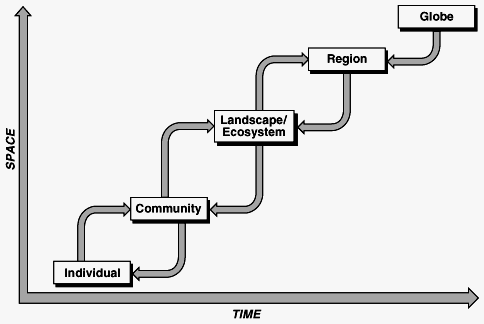


Models at different levels of biological organization can be used to
assess the impacts of climate change on forests.

What models can address the impacts of climate change on forests?

Models for addressing the impacts of climate changes in forests exist at different levels of biological organization: global, regional, landscape, community, and individual tree. No one model can address all impacts, but landscape transition models and regional vegetation and land-use models have been used to consider more impacts than the other models.
The development of landscape vegetation dynamics models of functional groups is suggested as a means to integrate the theory of both landscape ecology and individual tree responses to climate change. Risk assessment methodologies can be adapted to deal with the impacts of climate change at various spatial and temporal scales.
Four areas of research needing additional effort are identified: (1) linking socioeconomic and ecologic models, (2) interfacing forest models at different scales, (3) obtaining data on susceptibility of trees and forest to changes in climate and disturbance regimes, and (4) relating information from different scales.

Dale, V. H. and H. M. Rauscher. 1994. Assessing impacts of climate change on forests: The state of biological modeling. Climatic Change (in press).
Integrated Assessment Briefs. 1995. ORNL/M-4227. Oak Ridge National Laboratory, Oak Ridge, TN.